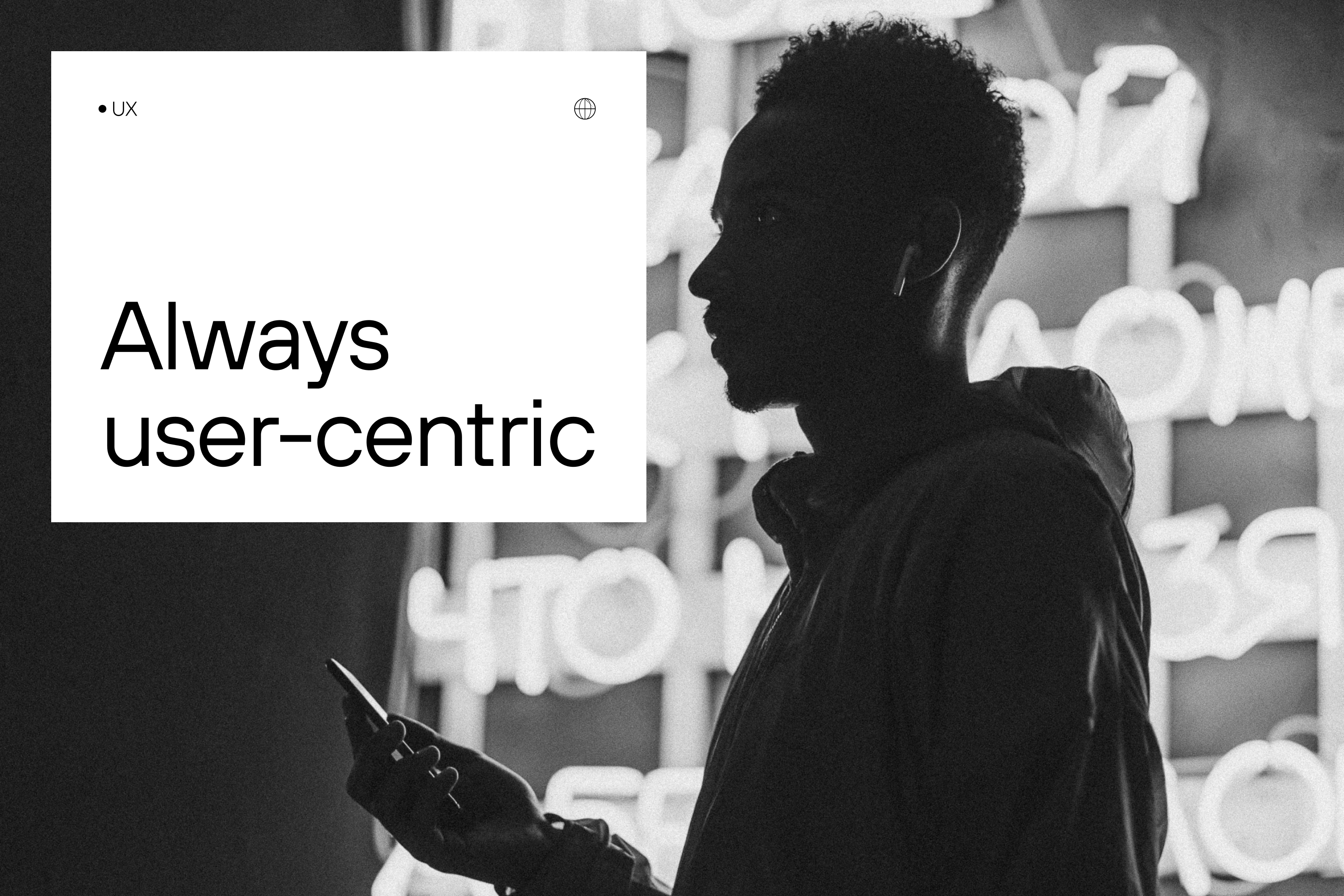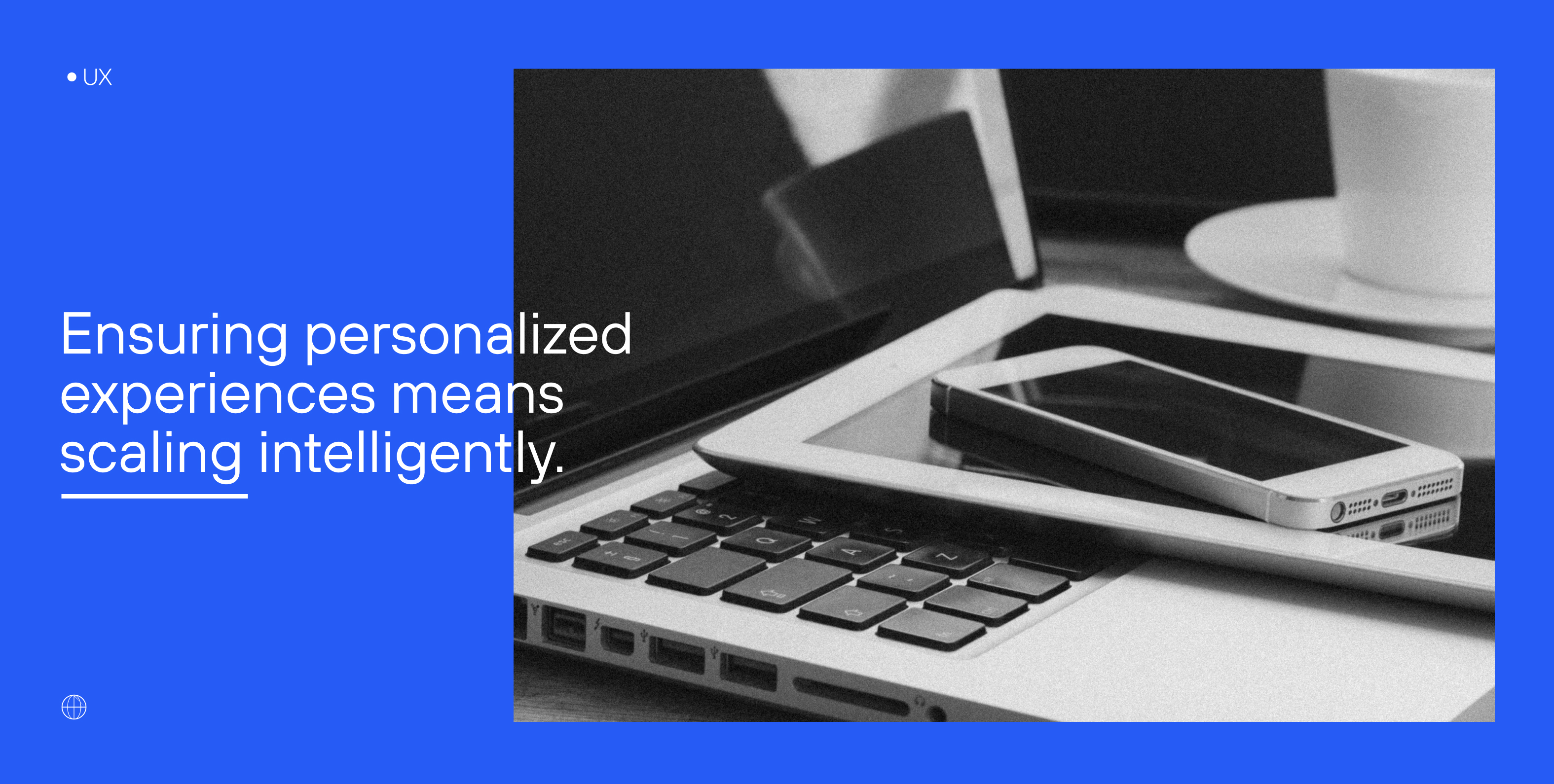
These days, consumers expect more than just products or services. To earn their attention and loyalty, companies need to deliver a personalized experience, one that includes tailored content and recommendations that reflect each user’s individual preferences.
Offering this type of journey is a decisive factor in driving customer engagement and has a direct impact on results. Ultimately, it saves users time by giving them exactly what they’re looking for or didn’t know they needed.
In this article, you'll explore the potential of personalized experiences and learn how they can redefine how your brand connects with its audience.
What Is a Personalized Experience?
A personalized experience involves the strategic use of data and technology to tailor each customer’s journey on an individual level. This can include:
- Specific content is shown on a website.
- Product recommendations based on previous interactions.
- Interface adjustments based on user behavior.
The goal is clear: to deliver relevance and satisfaction, increasing the chances of conversion and customer retention.
According to the TrueGen study by Box1824 in partnership with McKinsey, brands that offer customized experiences can create more authentic connections, especially with younger generations who value trends and authenticity. This strengthens brand affinity and long-term trust.
Learn more about the TrueGen study.
Types of Personalization
There are several ways to apply personalization:
- Explicit Personalization
Based on data provided directly by the user, such as preferences or profile details.
- Implicit Personalization
Derived from user behavior, such as browsing history, clicks, or searches.
- Contextual Personalization
Takes into account factors like location, time of day, device type, and even weather.
Real-world examples include tailored dashboards, segmented content, guided onboarding, and personalized email automation.
Discover how personalized experiences can elevate your business!
The Importance of Personalization in Today’s Market
Relevance is the new measure of value. In a market that’s more competitive than ever and with increasingly demanding consumers, personalization has become one of the strongest differentiators when it comes to customer retention and conversion.
According to the World Global Style Network (WGSN), digital personalization is one of the top drivers of customer loyalty. Brands that tailor their offerings to consumer needs see more frequent purchases and stand out in the marketplace.
Bottom line: delivering relevant experiences shows that your brand truly understands and values the customer. This drives greater engagement, trust, and business outcomes.
Also read: Digital Accessibility: Inclusive Experiences for All

Connections That Understand the Customer
You might not even notice it, but personalization is already part of your everyday life. Many global platforms use behavioral data and individual preferences to deliver tailored interactions that save time and increase satisfaction.
Here are a few familiar examples:
- Netflix analyzes what you watch, how long you watch it, whether you skip scenes, and even what time of day you watch content, all to suggest titles you're more likely to enjoy. Bonus: the movie thumbnails adapt to your profile, showing the image most likely to grab your attention.
- Spotify suggests songs based on your listening habits and creates playlists like Discover Weekly and Release Radar using AI and data from users with similar tastes, keeping you engaged and connected to the platform.
- YouTube builds your homepage based on the videos you watch most, your favorite channels, and your average watch time. Autoplay also adjusts to your viewing history to keep you engaged with content that matches your interests.
- Instagram uses algorithms to determine which posts and stories appear first in your feed, based on who you interact with most and the type of content you consume. The Explore tab is also heavily personalized to reflect your behavior.
- Google Maps learns your travel patterns and location preferences to offer smarter suggestions. It might recommend restaurants based on your cuisine history, highlight low-traffic hours, or remind you of frequently visited spots.
- iFood personalizes the entire browsing experience by suggesting restaurants and dishes based on your order history, current time, and location. A key feature: it offers discount coupons relevant to your profile and shows estimated delivery times based on your past addresses.
These examples show how personalization can make interactions smoother and more memorable. And they’re all from market-leading brands.
How to Implement Personalized Experiences in Your Business
Given that consumers expect to be treated as unique individuals, offering generic experiences could leave your business behind. So, how can you turn this expectation into a concrete strategy?
Below are the essential steps for implementing personalization strategically and effectively, aligning data, technology, and empathy. Use this guide as a foundation to refine your approach and deliver real value in every interaction.
| Step | What to Do | How to Apply It |
|---|---|---|
| Collect Relevant Data | Gather information on customer behavior, preferences, and history. | Use forms, website behavior, past interactions, and social media. |
| Smart Segmentation | Group customers by similar traits or needs. | Create personas; segment your base by interests, location, or funnel stage. |
| Automated Personalization | Use tools that automate actions based on customer profiles. | Send automated emails with product suggestions based on previous purchases. |
| Dynamic Content | Adapt displayed content for each user. | Show different banners, texts, or offers based on behavior and preferences. |
| Product Recommendations | Suggest items based on data and past behavior. | Use “You may also like” sections based on similar purchases or views. |
| Continuous Feedback | Listen and improve based on customer feedback. | Use satisfaction surveys, reviews, and NPS monitoring for ongoing improvement. |
| A/B Testing and Optimization | Try different approaches and choose what works best. | For example, test two email versions with different personalization and compare the results. |
While applying these personalization practices can be complex, businesses with robust marketing and tech teams can manage it in-house with the right strategies and tools. However, for most companies, partnering with experts who already master the necessary technologies and methodologies is often the most efficient and scalable solution.
Want to implement a personalized journey?
Personalization Across Industries
Personalization is expanding its reach and reshaping the future of communication and how businesses interact with their audiences. Solutions like Opigno LMS, a Drupal-based learning management platform, demonstrate how the integration of data intelligence and user experience can create more effective, relevant journeys.
Several industries are already using personalization to create more engaging, exclusive, and satisfying interactions.
In Education, platforms like Coursera and Duolingo adapt content and learning paths to each student’s pace, interests, and progress.
Benefits:
- Content tailored to individual needs.
- Adaptive learning paths.
- Increased engagement and knowledge retention.
Result: more effective, student-centered education—and more profitable businesses, too.
In Retail, personalized experiences drive both sales and loyalty. Brands use browsing and purchase history to suggest products and build more relevant campaigns.
Benefícios:
- Higher conversion rates.
- Improved shopping experience.
- Stronger consumer-brand relationships.
In Healthcare, personalized digital tools enable individualized monitoring and treatment recommendations.
Benefits:
- Better management of chronic patients.
- Higher treatment adherence.
- Data-driven prevention strategies.
In Fashion, personalization ranges from outfit suggestions to virtual fitting room experiences based on body type and style preferences.
Benefits:
- More accurate and seamless shopping experience.
- Fewer returns.
- Stronger alignment between brand identity and audience.
Learn more about Virtual Fitting Rooms, now successfully used by many fashion brands.
Across all these industries, personalization translates into real value, turning data into human, efficient, and memorable experiences.
How Personalized Experience Impacts Results
A personalized experience directly influences key business metrics such as:
Increased conversion rates.
Higher customer retention.
Improved user satisfaction.
More repeat purchases and organic referrals.
Businesses that invest in personalization gain a clear competitive edge: they deliver more value and create genuine connections with their customers.
Personalized Experience: A Smart Growth Strategy. By adapting products, services, and interactions to each consumer’s real needs, your company will:
- Build stronger loyalty.
- Increase engagement.
- Stand out in the Market.
Personalization transforms the customer journey and drives real business outcomes.
Ready to deliver a unique digital experience to your customers?
Get in touch with Dexa and learn how to personalize your consumer journey and maximize your results.

